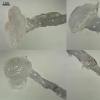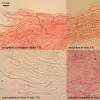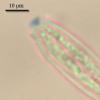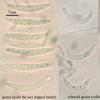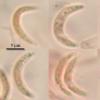
28-10-2025 19:33
 Nicolas Suberbielle
Nicolas Suberbielle
Bonjour à tous,Je voudrais votre avis sur cette r

31-10-2025 09:19
 Lothar Krieglsteiner
Lothar Krieglsteiner
Can somebody provide me with a file of:Rogerson CT

09-08-2025 13:13
 Maria Plekkenpol
Maria Plekkenpol
Hello,Yesterday I found these on burnt soil. Apoth

25-11-2016 13:54
 Stephen Martin Mifsud
Stephen Martin Mifsud
Hi, I found numerous seeds of Washingtonia robusta

28-10-2025 22:22
 Bernard Declercq
Bernard Declercq
Hello.I'm searching for the following paper:Punith

28-10-2025 15:37
Carl FarmerI'd be grateful for any suggestions for this strik
Growing on leaf sheaths of Carex rostrata in bog, 18.09.2012, N61,058846° E69,467926°.
Apothecia turbunate, with long stipe (16 mm), graduating to receptacle (4 mm diam), outer surface of stem covered by slime, disc and outer surface have the same whitish color, translucent.
Stem composed of outer gelatinose layer, excipulum (porrecta) and medulla (gelatinosa), receptacle lacking outer gelatinose layer and have excipulum from textura globosa-prismatica, medulla the same; cells of prismatica at stem 46 x 8,7; at receptacle 40 x 15; hyphae in medulla 2,5 broad; outer gelatinose layer hyphae 2 mk broad, ended with enlarged clavate cells up to 8 mk broad; asci cylindrical, with not clear clamp, pore euamyloid, 64,5-74,7 x 5-6,5; paraphyses cylindrical with some enlargement to the tip (2 mk broad at tip), without VBs, segmented, rarely branched; spores fusoid when in asci, upon release becoming strongly curved, many guttulate, 19,5 (18-21) x 2,5 (2,2-2,7) (10 straight spores measured).

Zotto
I've noticed that spores collected from stipe (washed away here) all were strongly curved, in contrast with tapped mount where spores were forced to release, and there they were curved and straight both. There is one more picture of such spores from stipe, only strongly curved. So, probably they become curved some time after release? I may study this repetedly, i have two more frbs.

Now I see: HB 6200 (Karsten 2061, in H) shows the type of pileata with long straight spores which corresponds to his diagnosis. HB 4498 (same coll. from M) does not fit the protologue, so is not type, though labelled "holotype". The closely related species with C-shaped spores is Helotium costantini Boud.
Zotto

